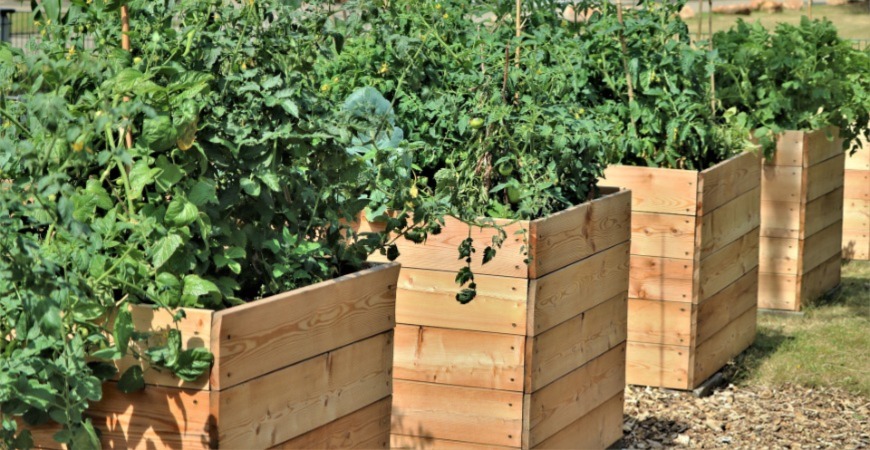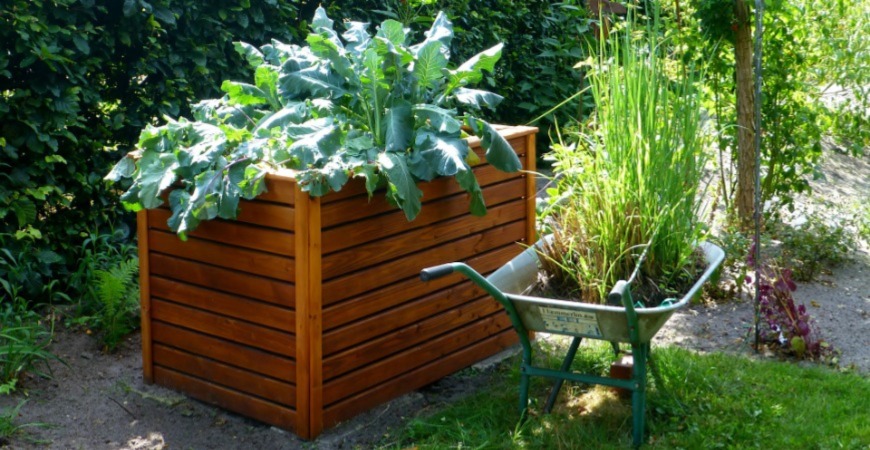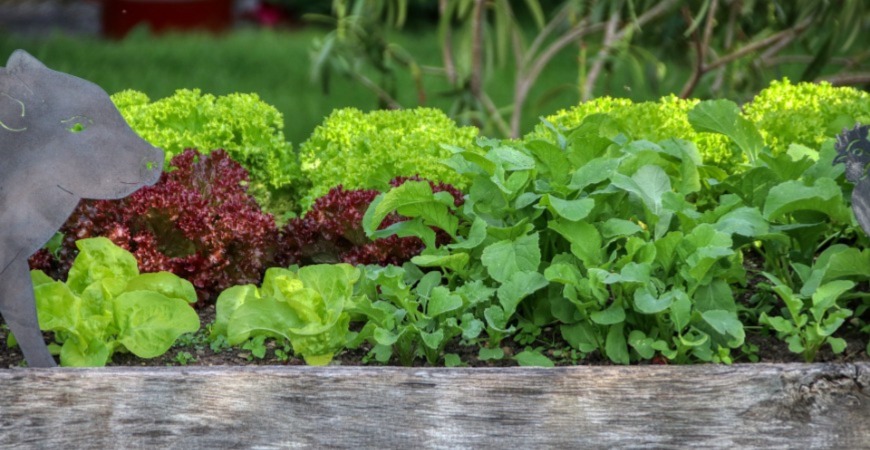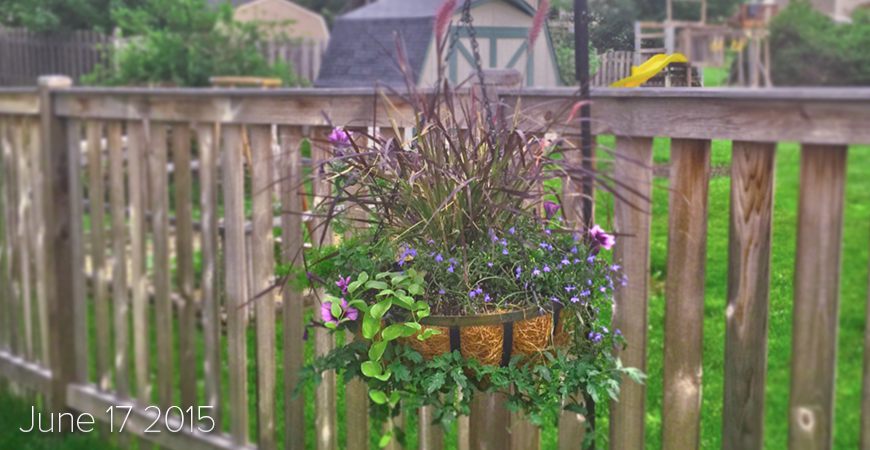
Making the Most of Your Raised Garden Beds
If you think of your landscape in two-dimensional terms, you may be missing out on a range of benefits that raised garden benefits provide. Beyond the relief they offer your sore back muscles, they can also be a boon to some of our favorite plants and veggies.
So, if you’re looking to spruce up your yard, give your garden a raise.
What is a Raised Garden Bed?
At the most basic level, a raised garden bed is when the planting bed sits on top of your current soil. Simply dumping a small hill of potting soil in your backyard qualifies.
However, most gardeners prefer something that looks a little less, well, dumpy. Often, frames made of wood, metal, or cinder blocks which help contain the soil while also offering another design element to their landscape — you can even build our own for additional personalization.
Many gardeners employ more than one raised garden bed in their yard. This allows them to separate plants or vegetables by their care needs.
Using multiple raised garden beds also makes access easier. A row of four-by-eight garden beds, for instance, allows you to evenly water and disperse mulch or fertilizer.
Additionally, raised garden beds enable you to perfectly plan your garden. If your garden area is shared or leased, they’ll make it easier to share space without encroaching on anyone else’s garden.
What Are the Benefits of Raised Garden Beds?
Raised garden beds aren’t just for looks. They offer a variety of benefits that are hard to dismiss:
Customized soil
In most cases, you’re forced to rely on the soil in your yard as the foundation for any plant growth. Raised garden beds allow you to create a custom mixture designed for you and your garden’s needs.
Extended growing season
Raised garden beds heat up quicker than ground soil. This allows you to start planting earlier in the season.
Fewer weeds
Weed seeds scatter on the ground and are quick to establish a foothold. With the soil raised and separated, a well-tended garden will have few, if any, weeds.
Improved draining
Because the garden soil sits on top of typical soil, it drains more easily. This reduces root rot and boosts growth.
Increased space
Raised garden beds provide more space in tiny gardens. When you create a small rounded mound in your bed, you also provide more surface space for your plants to grow.
Reduced foot traffic
By raising and containing your garden, children, pets, and guests are less likely to accidentally trample your plants and flowers.
Relieved muscles
Since the plants aren’t growing at ground level, there’s less squatting, hunching, and other uncomfortable positions for your body.
So, while not everyone needs a raised garden bed, almost everyone can reap the advantages of one.
What to Plant in a Raised Garden Bed
There’s no real limit to what plants or vegetables you grow in your raised garden bed. Accounting for space, almost anything that you can plant and nourish in your typical yard soil can also be planted in a raised bed.
However, some plants and vegetables profit from the elevation and separation more than others. Typically, greenery with extensive root systems or a preference for warmer soil benefits the most.
So, if you’re wondering what you should be planting in raised garden beds, here are a few of our favorite options:
- Berries can be finicky when it comes to soil choice, and they’re often threatened by ground-bound pests. Growing them in raised garden beds allows you to grow them in their ideal soil while offering some protection from bugs and snails.
- Evergreen shrubs or any other shrub that can be grown in a container will also thrive in raised garden beds.
- Fragrant flowers offer wonderful scents and don’t need as much space as plants, veggies, or fruits, making them ideal for a raised bed.
- Leafy greens also don’t require as much space and can be grown in organized rows that look great — while also providing a source for salad ingredients all season long.
- Root vegetables of all varieties are well-suited for raised garden beds because they provide the necessary space and depth for healthy growth.
- Sweet and hot peppers prefer soil that’s well-draining, warm, and light.
- Tomatoes love warm soil and have an expansive root system, making them a perfect addition to your bed.
If you’re keen on companion planting, you may also want to consider growing herbs like basil, dill, mint, and thyme due to their ability to repel pests. Vivacious flowers like cosmos, marigolds, and sunflowers can also add a touch of color while keeping harmful insects at bay.
To really step up your game, consider deploying your raised garden beds thematically.
A garden populated with tomatoes, basil, oregano, onions, and peppers will give you pizza toppings throughout the growing season. Or, consider keeping a deconstructed salad on hand by growing spinach, kale, cucumbers, carrots, and parsley.
How to Plant in Your Raised Garden Beds
Your raised garden deserves proper care and attention. While planting in them isn’t all too different from planting at ground level, there are a few common pitfalls to avoid:
- Choosing the wrong spot: Try to place your garden bed in a place where it gets at least six hours of sunlight and where you’ll have access to all sides of the bed.
- Ignoring mulch: Mulch stymies weeds keeps the soil moist, and prevents dirty fruits and vegetables.
- Making your bed too big: Most pre-made kits are three to five feet wide, which allows you to easily reach every plant, flower, or veggie.
- Not protecting your garden: Companion plants and wire fencing can keep pests of all sizes away.
- Not using customized soil: As we said earlier, one of the benefits of a raised garden is you can create a custom soil mixture that’s ideal for you and your plants’ needs. If using a pre-mixed option, make sure to use one designed for raised garden beds.
Raised Garden Beds are a Boon for Your Garden (and Your Back)
Almost every yard could use a raised garden bed. Besides the benefits they offer some of our favorite plants, flowers, and produce, they also help make it easier for gardeners to tend to their bounty.
So, don’t wait until next season to decide whether one is for you. Give raised garden beds a chance today!













